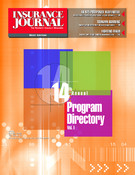As an increasing number of state regulators conduct inquiries and tighten accounting rules and reporting requirements for finite reinsurance transactions, one P/C trade group is urging regulators to take a consistent approach and avoid creating a crazy-quilt of confusing investigative practices and compliance rules.
The Property Casualty Insurers Association of America noted that accounting standards for finite reinsurance transactions are already in place and that the National Association of Insurance Commissioners would be an ideal forum for state regulators to develop a uniform approach to the finite risk issue.
“Both Generally Accepted Accounting Principles (GAAP) and statutory insurance accounting give clear guidance on reporting and accounting for finite reinsurance transactions,” said PCI President Ernie Csiszar. “While there may be a need for increased disclosure requirements that would alert regulators to the types of contracts that may demand closer review, we don’t think the current investigations into such practices by the FBI, SEC and others is an indictment of the state regulatory system. There are laws on the books that prohibit fraudulent transactions and the individuals and companies that break those laws should be prosecuted.”
PCI stated that its members believe that states should take a uniform approach to conducting inquiries of insurer and reinsurer practices and that leadership from NAIC is sorely needed. PCI cited Y2K and producer compensation as two previous instances where the NAIC facilitated a uniform and efficient issues management process.
“The NAIC has the opportunity to take a leadership position and help states adopt a uniform and consistent approach to this issue,” Csiszar said. “I sincerely hope the NAIC’s bureaucratic red tape does not result in the organization missing the mark and lending further fuel to the calls for additional federal regulatory intervention.”
Finite risk reinsurance combines traditional reinsurance with financing techniques and is designed to be a cost effective alternative to a standard insurance policy. Finite risk transactions can be structured to cover past or future losses. In recent months finite reinsurance transactions have come under increasing regulatory scrutiny after allegations arose that some insurers used these products to smooth over earnings statements.
“Finite reinsurance products are an important financial tool for both primary insurers and reinsurers,” Csiszar said. “They can lower the cost of reinsurance and even make reinsurance coverage more available because they allow reinsurers to appropriately limit their risk. However, it is critical that these transactions be accounted and reported properly. That’s why a uniform set of definitions and accounting standards is so important to insurers and regulators.”
PCI has been closely monitoring state regulatory activity on the finite reinsurance issue for the past six months.
Was this article valuable?
Here are more articles you may enjoy.


 USAA to Lay Off 220 Employees
USAA to Lay Off 220 Employees  Supreme Court Makes It Easier to Sue for Job Discrimination
Supreme Court Makes It Easier to Sue for Job Discrimination  Wildfires Are Upending Some of the Safest Bets on Wall Street
Wildfires Are Upending Some of the Safest Bets on Wall Street  North Carolina Adjuster and Son Charged With Embezzlement in Roof Jobs
North Carolina Adjuster and Son Charged With Embezzlement in Roof Jobs 


